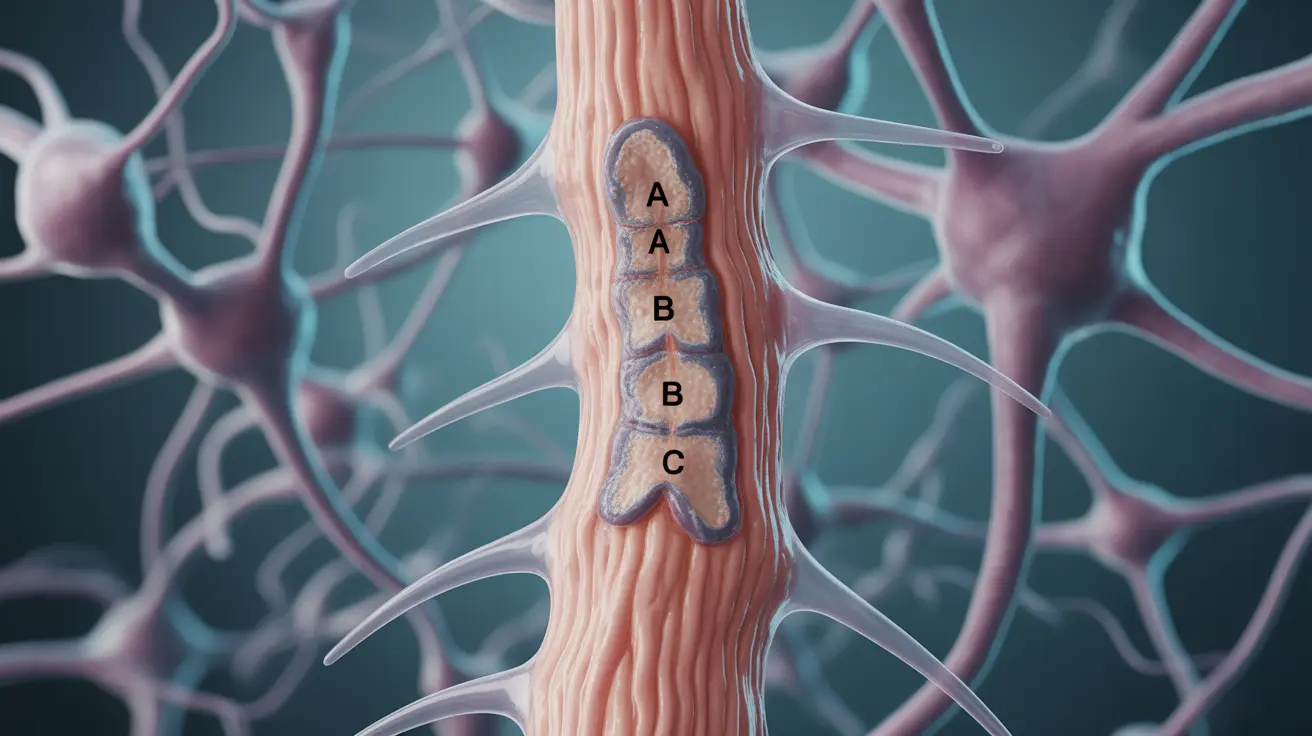Multiple sclerosis (MS) lesions on the spine can significantly impact a person's quality of life and daily functioning. These lesions, also known as plaques, develop when the immune system mistakenly attacks the protective covering of nerve fibers in the spinal cord. Understanding how these lesions affect the body and what treatment options are available is crucial for both patients and healthcare providers.
This comprehensive guide explores the symptoms, diagnosis, and management of spinal MS lesions, helping you better understand this aspect of multiple sclerosis and its implications for overall health and well-being.
Common Symptoms of Spinal MS Lesions
When MS affects the spinal cord, it can cause a variety of distinctive symptoms that may vary in severity and duration:
- Muscle weakness or numbness
- Difficulty with balance and coordination
- Tingling or burning sensations
- Problems with bladder and bowel control
- Muscle spasms or stiffness
- Difficulty walking or maintaining posture
The location and size of spinal lesions often determine which symptoms a person experiences. Lesions in different areas of the spine can affect various bodily functions, from leg movement to bladder control.
Diagnostic Approaches for Spinal MS Lesions
Detecting and diagnosing MS lesions on the spine requires specialized imaging techniques and careful clinical evaluation:
MRI Imaging
Magnetic Resonance Imaging (MRI) is the gold standard for identifying spinal MS lesions. This technology can:
- Reveal the presence and location of lesions
- Show both active and older lesions
- Help monitor disease progression
- Guide treatment decisions
Additional Diagnostic Tools
Healthcare providers may also use:
- Neurological examinations
- Evoked potential tests
- Spinal fluid analysis
- Blood tests to rule out other conditions
Treatment Strategies for Managing Spinal MS Lesions
Treatment typically involves a multi-faceted approach aimed at both managing symptoms and slowing disease progression:
Disease-Modifying Therapies
These medications work to reduce inflammation and prevent new lesions from forming. They may include:
- Injectable medications
- Oral medications
- Infusion treatments
Symptom Management
Specific treatments may be prescribed to address individual symptoms:
- Physical therapy for mobility issues
- Medications for muscle spasticity
- Bladder management strategies
- Pain management techniques
Living with Spinal MS Lesions
Adapting to life with spinal MS lesions often requires lifestyle modifications and ongoing support:
- Regular exercise and physical therapy
- Stress management techniques
- Proper nutrition and rest
- Support group participation
- Regular medical monitoring
Frequently Asked Questions
What symptoms are commonly caused by multiple sclerosis lesions on the spine?
Spinal MS lesions typically cause muscle weakness, numbness, tingling sensations, problems with balance and coordination, and difficulties with bladder or bowel control. The specific symptoms depend on the location and size of the lesions.
How are MS lesions on the spinal cord detected and diagnosed?
MS lesions on the spinal cord are primarily detected through MRI scanning. Diagnosis may also involve neurological examinations, spinal fluid analysis, and other tests to confirm the presence of MS and rule out other conditions.
What treatment options are available to manage spinal cord lesions in multiple sclerosis?
Treatment options include disease-modifying therapies to prevent new lesions, medications for symptom management, physical therapy, and rehabilitation services. The treatment plan is typically customized to each patient's specific symptoms and needs.
Can spinal lesions in MS lead to problems with walking and bladder control?
Yes, spinal lesions in MS commonly affect walking ability and bladder control. These symptoms occur because the lesions disrupt nerve signals between the brain and the affected body parts.
How do disease-modifying therapies affect the progression of spinal cord lesions in MS?
Disease-modifying therapies can help reduce inflammation, prevent new lesions from forming, and slow the progression of MS. These medications work by modulating the immune system's response and can significantly impact the course of the disease.




